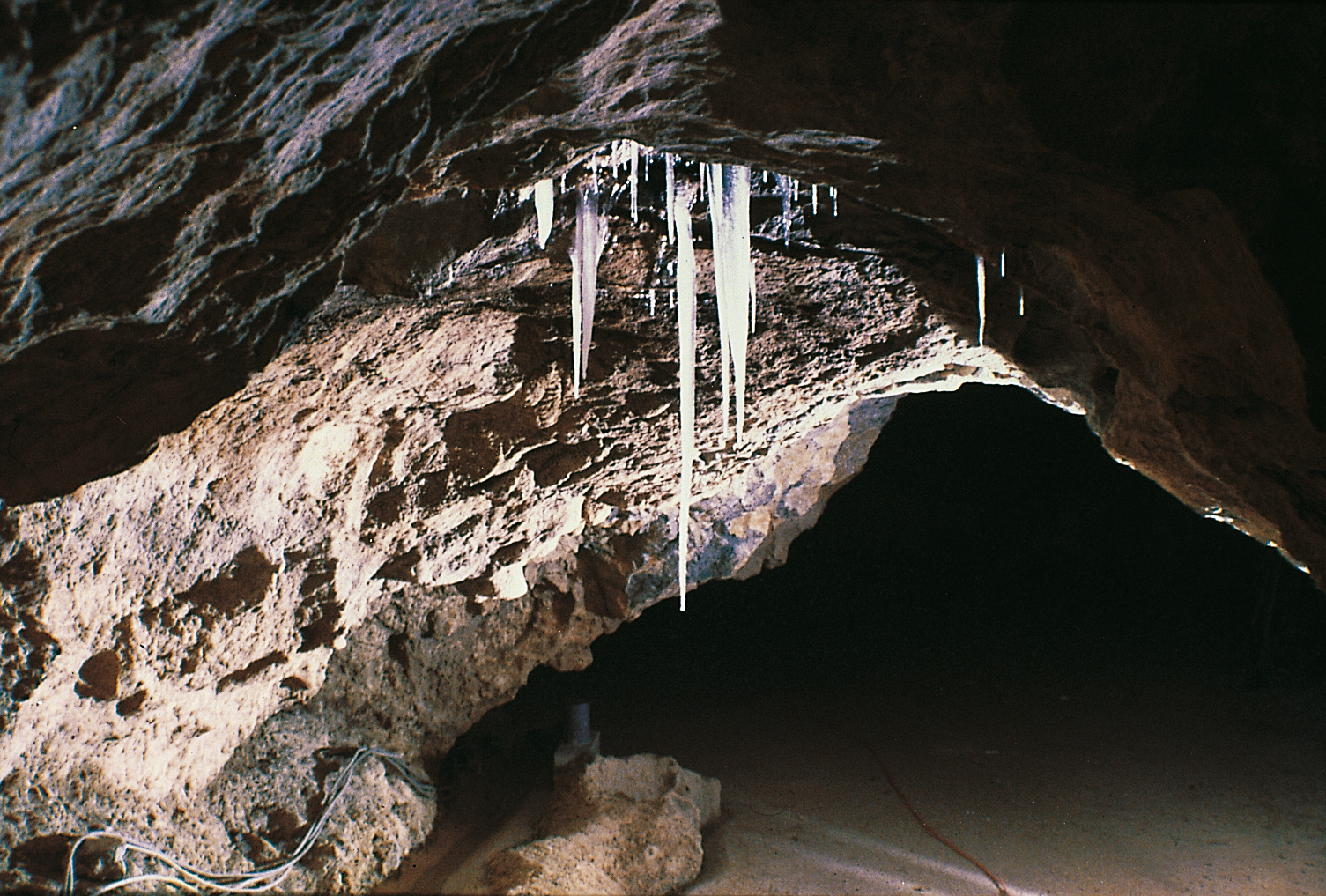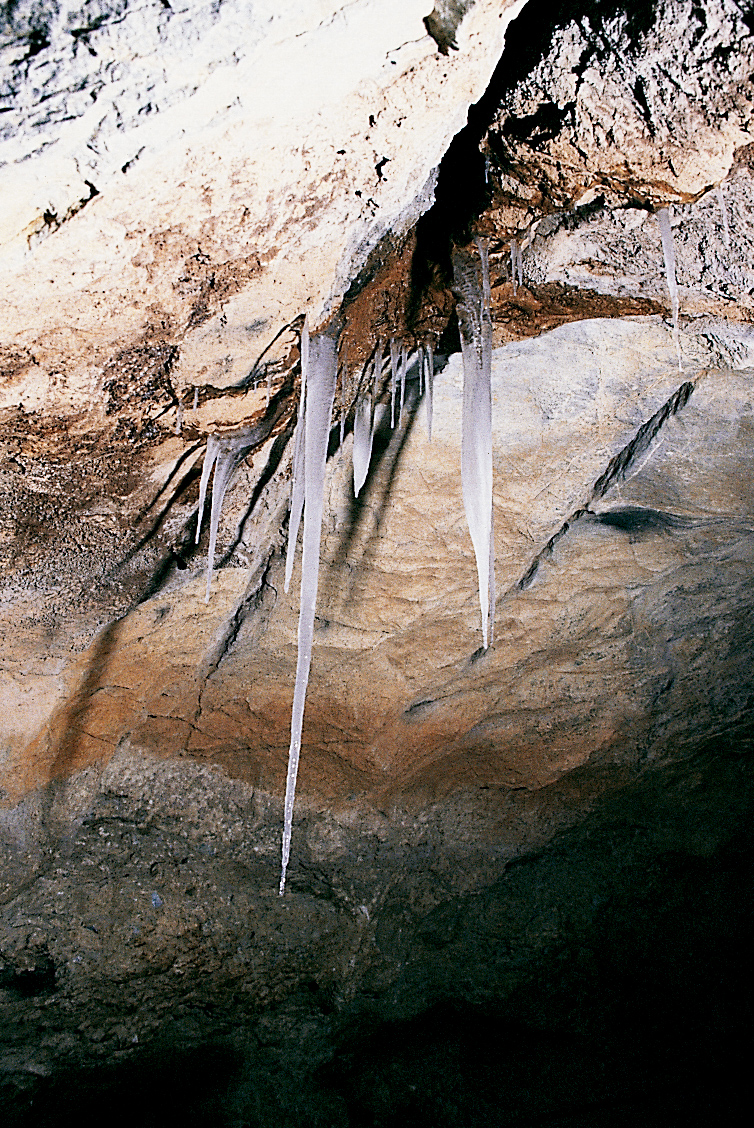English below.

Le stalattiti di ghiaccio che vediamo in queste foto si sono formate nella galleria iniziale e nella Sala dell’Orso nell’inverno del 1985, durante un’eccezionale ondata di freddo che, all’esterno, raggiunse il valore di -16°C°.
È noto che durante l’inverno il vento da cui la grotta prende nome è entrante, poiché la colonna d’aria interna, avendo una temperatura costante di + 10,7°C., essendo più calda, e quindi più leggera dell’aria esterna, sale velocemente verso gli imbocchi superiori, aspirando aria fredda esterna dall’imbocco inferiore.

La temperatura di +10,7°C. è costante solo nelle parti più interne della grotta (zona termostabile) dove l’aria proveniente dall’esterno, a contatto con la roccia si riscalda, raggiungendo un valore che corrisponde alla media annua esterna. La prima parte viene invece definita “zona termovariabile” poiché durante l’inverno viene influenzata dalla temperatura esterna.
La velocità del vento entrante è direttamente proporzionale alla differenza di temperatura tra l’interno e l’esterno, pertanto, quando fuori si raggiungono temperature eccezionalmente basse, la quantità d’aria fredda che viene aspirata può essere tale da provocare nel primo tratto della grotta la formazione di concrezioni di ghiaccio. La loro durata è però effimera poiché, non appena la temperatura esterna sale di qualche grado, si sciolgono.
Nel 1985 si accedeva ancora alla grotta mediante una galleria artificiale in cemento armato che, essendo particolarmente stretta, incrementava la velocità della corrente d’aria. L’aspirazione era talmente violenta che, in prossimità dell’ingresso, la neve veniva attratta dal vento prima che potesse toccare il suolo esterno, depositandosi quindi sul pavimento della galleria iniziale.

Inverno 1985: la neve che copre il pavimento della galleria iniziale è stata aspirata dal vento entrante.
Winter 1985: the snow covering the floor of the initial tunnel was sucked in by the wind blowing in.
ICE FORMATIONS IN THE WIND CAVE
The stalactites of ice seen in this photo formed in the initial tunnel and in the Hall of the Bear in the Winter of 1985, during an exceptional bout of cold weather which, outside, reached a temperature of -16°C°.
It is known that during Winter the wind from which the cave takes its name blows in, since the internal column of air, having a constant temperature of 10,7°C., therefore warmer and lighter than the air outside, rises up quickly towards the upper openings, sucking cold air outside from the bottom opening.
The temperature of +10,7°C. is constant only in the most internal parts of the cave (stable thermal area) where the air coming from outside, on contact with the rock heats up, reaching a temperature that corresponds to the average annual one. The first part instead is defined a “variable thermal area” since during Winter it is influenced by the temperature outside.
The speed of the wind blowing in is directly proportional to the difference in temperature inside and outside, so, when outside extremely low temperatures are reached, the quantity of cold air that is sucked in can be so much that it causes formations of ice to form in the first part of the cave. They last a very short time however since, as soon as the outside temperature goes up a few degrees, they melt.
In 1985 entry to the cave was still through a man made tunnel in concrete, which, being rather narrow, increased the speed of the air current. The suction was so violent that, near the entrance, the snow was captured by the wind before it could touch the ground outside, therefore falling on the floor of the initial tunnel.







